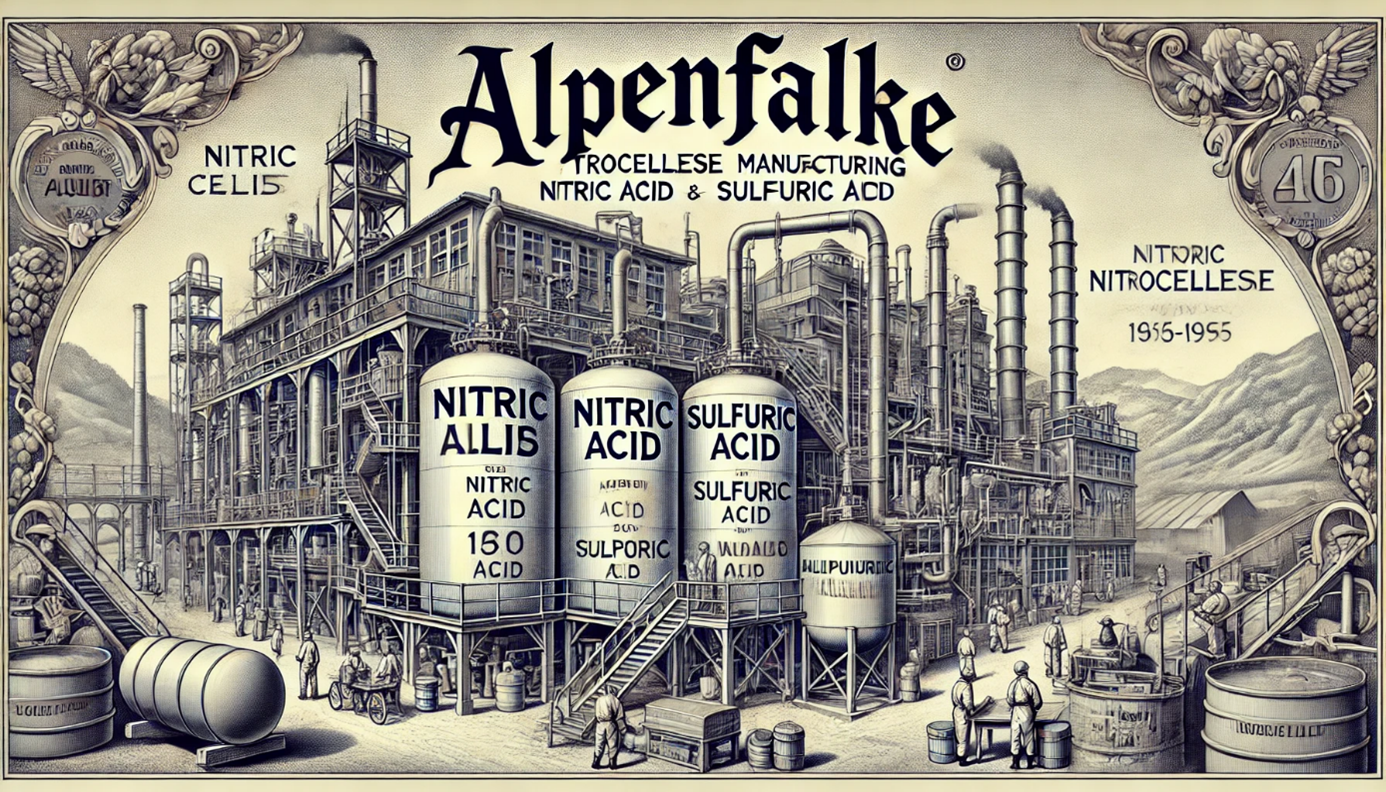Comprehensive Guide to the Manufacturing Process of Nitrocellulose
Nitrocellulose, a versatile and essential material, plays a pivotal role in industries ranging from explosives to coatings. Understanding its production process, especially during its peak manufacturing era at facilities like the Former Gopher Ordnance Works (FGOW), reveals the intricate balance of chemistry, engineering, and environmental management required. This guide delves into the detailed manufacturing process of nitrocellulose, covering every stage from raw material preparation to its final application.
Overview of Nitrocellulose Manufacturing
Nitrocellulose, also known as cellulose nitrate, is produced by treating cellulose fibers with a mixture of nitric acid and sulfuric acid. The process at FGOW focused on two main types of nitrocellulose:
- Guncotton: With a nitrogen content of 13.35-13.45%, this variant is used primarily in explosives.
- Pyrocellulose: Featuring a slightly lower nitrogen content of 12.6-12.7%, it is optimized for propellants and specialized applications.
The production process consists of several key stages:
- Preparation of Acid Mixtures
The production begins with the creation of the acids required for nitration:
1.1 Nitric Acid Production
- Raw Materials: Anhydrous ammonia and air.
- Process: Ammonia is vaporized and passed over platinum-rhodium gauze, combining with oxygen to form nitrogen oxides (NO and NO2). These gases are absorbed into distilled water to yield nitric acid with a strength of approximately 60%.
1.2 Sulfuric Acid Production
- Raw Materials: Sulfur is melted and burned to produce sulfur dioxide (SO2), which is then passed over catalytic beds to form sulfur trioxide (SO3).
- Final Stage: The gas is absorbed in water to produce sulfuric acid. Sulfuric acid’s role is critical as it prevents the dilution of nitric acid by absorbing water generated during the nitration reaction.
1.3 Fortifying Acid Mixture
The two acids are combined in a specific ratio (approximately 1 part nitric acid to 3 parts sulfuric acid by weight) to form the nitrating mix. This mixture ensures efficient cellulose nitration while maintaining the stability of the reaction.
- Preparation of Cellulose
The quality of nitrocellulose is heavily influenced by the cellulose source and its pretreatment:
2.1 Cellulose Sources
- Cotton Linters: Short fibers left after ginning cotton seeds, delivered in 150-pound bales.
- Wood Pulp: Processed in 700-pound rolls.
2.2 Pretreatment
- The cellulose is shredded and dried in large ovens to reduce its moisture content to less than 1%. This step ensures efficient and uniform nitration.
- Dried cellulose is conveyed via ducts to the nitration building for further processing.
- Nitration Process
Nitration is the chemical transformation of cellulose into nitrocellulose:
3.1 Mixing and Reaction
- Reactants: About 32 pounds of cellulose fibers are mixed in stainless steel nitrators with 1,500 pounds of the nitric-sulfuric acid blend.
- Result: Nitrocellulose and spent acids are discharged into centrifugal wringers, which separate the majority of the acid for reuse or disposal.
3.2 Washing and Boiling
- Objective: Remove residual acids and impurities through extensive washing cycles.
- Process: Multiple hot water boils over 70 hours ensure the hydrolysis of unstable components, enhancing nitrocellulose stability.
- Water Recycling: Process water is filtered to recover nitrocellulose fibers and reused in subsequent boils.
- Pulping and Poaching
Further purification and refinement follow the nitration process:
4.1 Pulping
- Using specialized machinery, cellulose fibers are cut into fine fragments, exposing any remaining impurities for removal.
- The resulting slurry is transferred to the poaching house for final washing.
4.2 Poaching and Washing
- Additional hot water cycles, combined with an alkaline sodium carbonate medium, neutralize acidity and ensure long-term product stability.
- Cold water washes finalize the purification, preparing the nitrocellulose for blending.
- Blending and Screening
5.1 Screening
- Nitrocellulose from various batches is blended to achieve uniform properties, particularly nitrogen content and solubility.
5.2 Sampling and Analysis
- Samples are analyzed for nitrogen content, solubility in ether-alcohol, and fiber fineness to meet military or industrial specifications.
- Solvent Processing
The final stages prepare nitrocellulose for specific applications:
6.1 Dehydration and Alcohol Rinsing
- Excess water is removed by rinsing nitrocellulose with alcohol. This step ensures compatibility with ether for subsequent mixing.
6.2 Mixing and Stabilization
- Nitrocellulose is combined with ether and stabilizers like diphenylamine to absorb nitrous fumes, ensuring long-term storage safety.
6.3 Pressing and Shaping
- The material is pressed into cylindrical blocks and extruded through dies to form strands or other desired shapes.
- Strands are further processed into flexible ropes or cut to specific lengths.
- Hardening and Final Processing
7.1 Hardening
- Powder is subjected to controlled drying processes to achieve the desired volatile content.
- For rifle powder, additional mixing with dinitrotoluene (DNT) adjusts its burn characteristics.
7.2 Glazing and Packaging
- Graphite is added to reduce static charges and improve packing. Excess graphite is removed, and the powder is blended for uniformity.
- The final product is stored in airtight containers, ready for shipment to ordnance plants or industrial facilities.
Environmental Considerations
The FGOW facility implemented measures to minimize environmental impact:
- Acid Neutralization: Waste acids were treated with finely ground limestone slurry before release.
- Water Recycling: Save-all systems recovered nitrocellulose fibers from wastewater for reuse.
- Wastewater Management: Effluent was processed to meet environmental standards before being discharged into nearby water bodies.
Conclusion
The manufacturing of nitrocellulose at FGOW exemplifies the intricate interplay of chemistry, engineering, and environmental stewardship. From its meticulous preparation of acids to the detailed processing of cellulose and rigorous quality control, the production process ensures a high-quality, versatile material suitable for diverse applications. As industries evolve, the legacy of nitrocellulose manufacturing continues to inspire advancements in material science and environmental responsibility.

